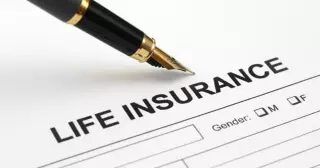
Whether you want to keep it, depends on the kind of insurance.
People obtain life insurance at a time in their lives when they need protection. However, what happens when the nest becomes empty and you are financially secure? The question is tackled by the Milford Beacon in “Should you keep your life insurance?”
For term insurance, the answer is fairly straightforward. If the need for the death benefit is done, like paying off a mortgage or being able to pay for the kid’s college educations, then you don’t really need to have the policy. If your health is good and you expect to live well and long, then you could simply let the policy lapse. You won’t need to pay the premiums, but the death benefits will be over, as of the date that the policy lapses.
An alternative is to convert the policy into one with cash accumulations. It isn’t the death benefit that you want so much, as the potential return of the cash value that could accumulate inside the policy. Some insurance companies may allow you to exchange your existing policy for a policy with hybrid features that include long-term care coverage and a death benefit. That may be useful, if you don’t otherwise have a long-term care insurance policy.
When the life insurance is a permanent or whole life insurance policy, things get a little complicated. First, the review should begin with what is called an “inforce illustration.” This is a forecast as to what can be expected to happen with the policy, if you keep it. The insurance company’s actuaries get to sharpen their pencils here. There are many different factors that go into the inforce illustration, including rate of return on cash value, the company’s dividend crediting rate, the number of years the premium has been paid and your expected mortality rate, among them.
What the inforce illustration will not show you is something your financial planner or estate planning attorney will: your policy’s “Internal Rate of Return,” also known as the IRR. The IRR on cash value shows how well your cash accumulates and what it earns inside the policy. You can then compare the IRR to other investments or savings, to see if this makes sense to keep.
Here’s a simplified explanation of the IRR. Let’s say you invest $10,000 per year and have a death benefit far larger than this. The IRR on death benefit will show you the return on your premium dollars that will be returned through the issuance of a death benefit check. If you die early in the life of the policy, the check will be large. If you have the policy for an extended period of time, the IRR declines and the numbers are more like those you’d expect from a fixed income investment.
Another angle to consider: how does the life insurance policy fit within your estate plan? Would you want to have the proceeds go to a grandchild, now that your children have children of your own? Does it belong inside a trust?
An estate planning attorney can advise you on creating an estate plan that fits your unique circumstances and may include life insurance policies.
Reference: Milford Beacon (April 30, 2019) “Should you keep your life insurance?”